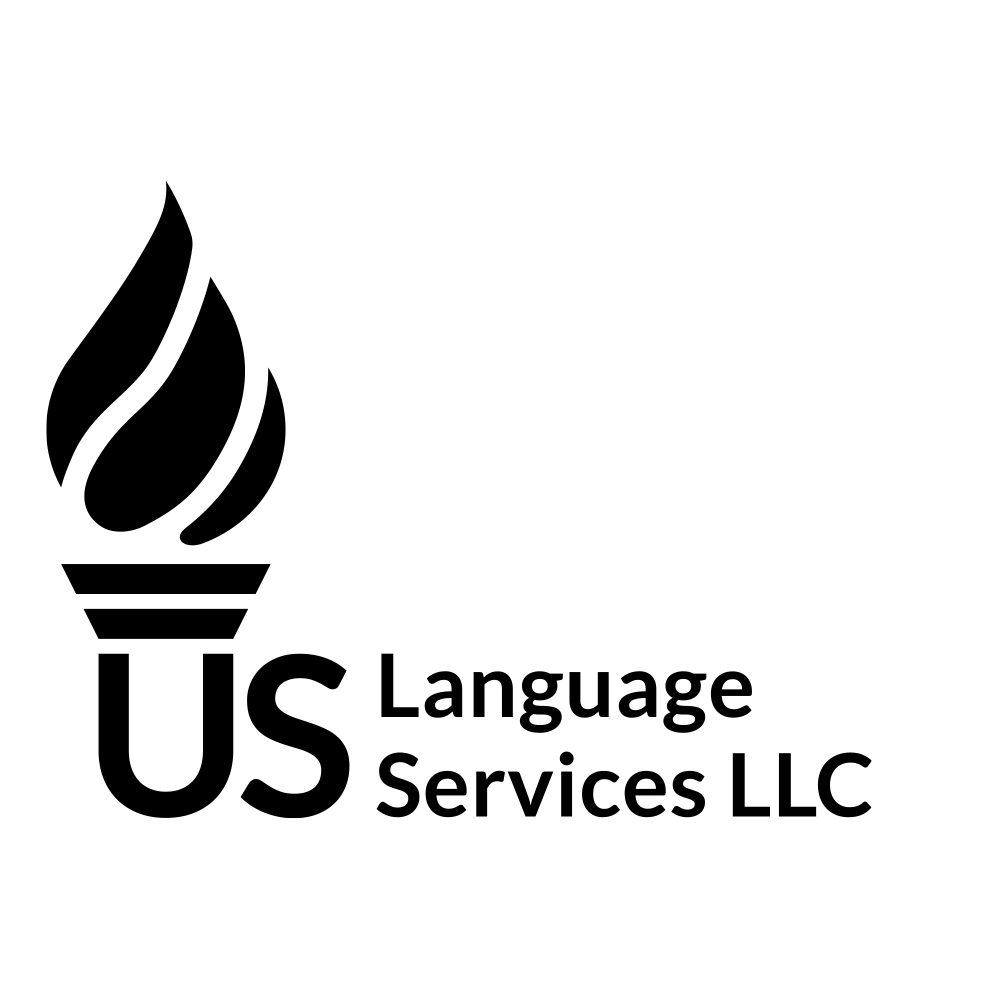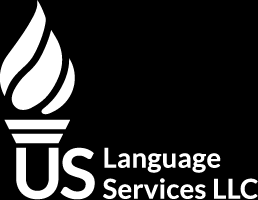How Should Immigrant Small Business Owners Keep Tax Records?
For immigrants starting a small business in the United States, keeping good records is a vital part of building a successful future. Recordkeeping helps you stay organized, track your income and expenses, and make decisions that guide your business forward. It also helps you meet tax and legal requirements.
Starting a business in a new country can feel overwhelming, especially if you’re still learning about U.S. tax rules or financial practices. But creating a system for keeping track of your records can make the process much easier. A good recordkeeping system includes keeping your income and expense records in order, understanding the tax obligations for your business, and tracking payroll and employee information if you plan to hire workers.
Thankfully, many tools are available to help business owners stay organized, like accounting software to manage income and expenses or cloud storage to keep digital copies of your records safe.
A well-organized system might take some extra time to set up at first, but in the long run, it can save you time and help you avoid headaches. With good recordkeeping habits in place, immigrant business owners can shift their focus toward growth and opportunity.
In this guide, we will answer the following questions:
- How Should Immigrant Small Business Owners Keep Tax Records?
- Should Small Businesses Keep Electronic or Paper Records?
- What is paper-based recordkeeping?
- What is electronic recordkeeping?
- What Records Should Small Businesses Keep?
- What are gross receipts?
- What are purchases?
- What are expenses?
- What are travel, transportation, entertainment, and gift expenses?
- What are business assets?
- What are employment records?
- What are tax records?
- How Long Should You Keep Business Records?
- How Should Small Businesses Prepare for Tax Records and Deductions?
- What’s the best way to prepare for deductions?
- How should you prepare to file taxes?
Should Small Businesses Keep Electronic or Paper Records?
One of the first decisions you’ll need to make when managing your business’s finances is how to store your records. Both paper-based and electronic systems have their advantages and challenges. Understanding these options can help you decide which approach works best for your needs as a small business owner.
What is paper-based recordkeeping?
Some small businesses still use paper-based methods to track income and expenses. This might involve maintaining physical copies of invoices, receipts, and bank statements. For example, a business owner may file receipts in folders labeled by month or category, such as “Supplies” or “Utilities.” This system can be appealing if you prefer working with hard copies or are not yet comfortable using technology for recordkeeping.
However, managing paper records comes with limitations. Physical documents take up space, and maintaining an organized filing system requires time and effort. Important papers can be misplaced, damaged, or destroyed, which may create challenges during tax season or financial reviews. For instance, if the ink on a receipt fades or the receipt gets lost altogether, you may have difficulty proving a deductible expense.
What is electronic recordkeeping?
Electronic recordkeeping has become the preferred option for many small business owners due to its efficiency and flexibility. Using financial software or accounting tools, you can organize, store, and access your records digitally.
Programs like QuickBooks, Wave, and even Google Sheets are popular choices that cater to a wide range of small business needs. For example, QuickBooks allows you to link your bank account, automatically categorize expenses, and generate detailed reports. Likewise, Wave provides some free tools for invoicing and tracking expenses if you’re getting started and want to see how well the software works for you before purchasing a more in-depth plan.
No matter which software you choose, electronic systems can help reduce errors and save time. Many programs automatically categorize transactions and reduce the chance of mistakes that can happen when entering data manually. For instance, doing the math by hand can sometimes lead to unintentional errors, but accounting software does those calculations for you, so you’re more likely to avoid mistakes.
Beyond helping with calculations for your business, the security features of accounting software like encryption and automatic backups protect your financial records from theft or loss. Due to the fact that your data is stored in the cloud, you can log in from any computer. This means that even if your computer is damaged, you won’t lose access to your records. Additionally, electronic storage eliminates the need for bulky filing cabinets, keeping your workspace neat and organized.
If you prefer using mobile devices like laptops and tablets, many accounting tools also offer apps that let you track expenses, send invoices, or view reports through mobile platforms. This can be especially helpful if you frequently meet with clients or suppliers outside your office.
Choosing a recordkeeping method depends on what feels most comfortable and practical for your business. For many immigrant business owners, adopting electronic tools can simplify financial management while freeing up time to focus on growing the business.
What Records Should Small Businesses Keep?
After you’ve determined how you want to keep track of your business records, you’ll need to decide which business records to prioritize.
The types of records you keep will depend on your specific business, but in general, you’ll want to track your income (the money coming in) and your expenses (the money going out). Most small businesses use accounting journals or ledgers for this, whether they be electronic or paper.
Every time you make a sale or purchase, there is a document that proves the transaction. These documents are important because they back up everything you record in your books and everything you report on your tax return. You can group them by year and type of transaction so that you can always find what you need when tax season arrives.
Now, let’s look at some specific examples of the types of records you should keep.
What are gross receipts?
Gross receipts are the total income your business makes from selling products or services. It’s important to keep track of this money so you can manage your business properly. Specific documents help track the sources of your gross receipts and ensure everything is accounted for.
For example, cash register tapes, printed records showing the date, time, items sold, and total amount paid, help you keep track of each sale made by your business. Deposit records show how much money you’ve put into your bank account, whether it’s cash or credit sales. Receipt books are great for keeping track of every sale and payment you make. Invoices are used for business transactions where you’ve provided a product or service and expect payment.
Finally, forms like 1099-MISC document income you earned as a contractor or from other non-employee payments. Each of these records contributes to accurately calculating and tracking your gross receipts.
What are purchases?
When it comes to small business, purchases are the items you buy to sell to your customers. For example, if you run a bakery, your purchases might include flour, sugar, and other ingredients.
To track these purchases, you need documents that show who you paid, how much the item cost, when the payment was made, and the specific item you bought. Let’s look at some of the documents you should keep to show purchases.
- Processed checks. Also known as “canceled checks,” or any other proof of payment, such as bank transfers. For example, if you paid a supplier for flour using a check, keep a copy of the processed check.
- Cash register receipts. For example, if you bought sugar at a local store for your bakery, keep the receipt that shows the cost and date of purchase.
- Credit card receipts and statements. If you used a credit card to buy baking supplies, make sure to keep the receipts and statements for those purchases.
What are expenses?
Expenses are the costs you pay to run your business, excluding purchases. For example, if you run a landscaping business, your expenses might include costs like fuel for your equipment, advertising, or hiring workers. To track these costs, you need documents that show who you paid, how much you paid, when the payment was made, and what the expense was for. Below are some of the documents you should keep to show expenses.
- Processed checks. This can include any other proof of payment, such as bank transfers.
- Cash register receipts. For example, if you buy supplies at a hardware store.
- Account statements. This could be any official financial statements from your bank or credit accounts that summarize your transactions for the month.
- Credit card receipts and statements. These show expenses paid with your business credit card.
- Invoices. Invoices list the services you paid for and how much you owe.
What are travel, transportation, entertainment, and gift expenses?
When you deduct travel, entertainment, gift, or transportation expenses, you need to prove certain details of each expense. For travel, keep track of the costs for transportation, lodging, and meals.
For entertainment and gifts, make sure you document the purpose of the expense and who was involved. These records help you back up your claims when it’s time to file your taxes.
According to IRS guidelines, you must provide specific evidence, like receipts, and keep a record of the purpose for these expenses to qualify for deductions.
What are business assets?
Business assets are the tools and property your business owns and uses to function, like machinery, office furniture, or even buildings. For instance, if you own a bakery, your oven, mixers, and delivery van are all business assets. Over time, these assets can lose value due to wear and tear or age, a process called depreciation. Think of it like how a car loses value the longer you own it, but in business, you can track that decrease to help lower your taxes.
When you sell an asset, you might make a profit or incur a loss. For example, if you sell a delivery van for more than you paid for it, that’s a profit. But if it’s sold for less than you paid, that’s a loss. Keeping records of these transactions helps you prove the details come tax season.
To stay organized and be sure you’re on top of your business assets, here are the important things you need to track.
- Acquisition details. This refers to when and how you acquired the asset. For example, did you buy that delivery van new or used? If you bought it from another business, you’ll need the invoice to confirm the transaction details.
- Purchase price. Keep track of how much you paid for an asset, especially for depreciation purposes. If you bought new office furniture or an oven, documenting the price helps determine its value over time.
- Improvements. Any upgrades or improvements you make to assets should be documented. For example, if you added new software to your computer system or renovated a portion of your building, that would increase the asset’s value, so it’s important to keep a record of those costs.
- Tax deductions. If you took any deductions like the Section 179 deduction. This allows you to deduct the full cost of certain property in the year you buy it, instead of depreciating it over several years. For instance, if you bought a high-end printer for your office, you might be able to deduct the full purchase price immediately.
- Depreciation. As assets lose value over time, you can track that decrease for tax purposes. Let’s say your delivery van was worth $20,000 when you bought it, but after five years of use, it’s now worth $8,000. You can deduct the $12,000 loss over the years to lower your taxes.
- Usage in your business. This refers to how an asset is used in your business. For example, your bakery oven is only used for baking, which is important to note when tracking depreciation.
- Sale details and sales price. Be sure to document when and how you sell an asset, the sale price, and any associated selling costs. For example, if you sold your van for $15,000, you’ll need to record that amount along with any fees.
What are employment records?
Employment records are essential for keeping track of the work and wages of your employees. These records help ensure you stay compliant with tax regulations and make it easier to calculate payroll taxes. Here are some key documents you should keep:
- Employee payroll information. This includes records of each employee’s wages, tips, commissions, and any bonuses. You should also keep track of deductions such as taxes and benefits. Pay stubs or electronic payroll records are great for this.
- Employee contracts. If you have contracts with your employees, make sure to keep a copy. These may include details on salary, benefits, and job responsibilities.
- Tax documents. You’ll also need to keep documents related to employee taxes, like W-2 forms, which summarize wages and taxes withheld, and W-4 forms, which show how much tax to withhold. If you have independent contractors, don’t forget about 1099 forms to report their income.
What are tax records?
Tax records are the documents you keep related to your business’s tax filings and payments. These records help you prepare your tax returns and are required if you’re audited by tax authorities. Here’s what to keep:
- Tax forms. Always keep copies of your filed tax forms, such as your business tax return, including any schedules, like Schedule C for sole proprietors. These forms show your income, expenses, and deductions.
- Tax payments. Record any tax payments you make, including federal, state, and local taxes. This might include sales tax, income tax, payroll taxes, or self-employment taxes.
- Tax-related correspondence. Keep any letters or documents from the IRS or your local tax authority, such as notices of tax assessments or refunds. These documents will be important if there are any discrepancies or questions in the future.
While the above items cover the most common small businesses should record, there may be additional items to consider depending on your specific business. Once you’ve identified which items you need to keep records of, the next question is how long you should keep them.
How Long Should You Keep Business Records?
The number of years you should keep a document depends on what it relates to, such as an action, expense, or event. While these are not exact rules, a smart approach is to keep your records for longer than you think you’ll need them. This helps you stay ready for things like fixing a mistake on your tax return, dealing with a tax audit, or planning for the future.
It is a good idea to keep records that support any income, deduction, or credit listed on your tax return until the time limit for making changes to that return has passed. This time limit is called the period of limitations. During this time, you can correct your tax return or ask for a refund, and the IRS can also review your taxes and charge extra if needed.
Here are some time frames to help you decide how long to keep your records:
- Three years. According to the IRS, you should keep most records for three years. This includes things like income and expense documents used to prepare your tax return if none of the special rules below apply.
- Three years or two years after paying taxes. If you ask the IRS to give you back money you overpaid, called a refund, or to reduce the taxes you owe because of an adjustment, known as a tax credit, keep those records for at least three years from the date you filed the return. If you paid the taxes later than when you filed, hold onto the records for at least two years from the payment date. Always use the later date as your guideline.
- Seven years for investment losses or unpaid debts. If you lose money because an investment becomes worthless, like when a company you invested in shuts down, or if someone owes you money and doesn’t pay you back, you should keep the records proving this loss for at least seven years.
- Six Years. If you forgot to report some of your income and the unreported amount is more than 25% of the total income listed on your return, you should keep those records for six years.
- Indefinitely. If you do not file a tax return, you should keep your records forever.
- Employment tax records. If you employ people, keep employment tax records for at least four years after the taxes are due or paid, whichever comes later.
Finally, you should always keep copies of the tax returns you’ve already filed. These can be helpful when preparing future returns or making changes to past ones. If you choose to file your returns electronically with a company like TurboTax or something similar, it should be easier to locate your old tax returns.
Although these are general guidelines, it is always better to keep your records longer to avoid any problems later.
How Should Small Businesses Prepare for Tax Records and Deductions?
By keeping track of your expenses throughout the year, you can make sure you have the necessary documents when it’s time to file taxes. Let’s discuss how to keep records that will help you stay on top of your tax responsibilities.
What’s the best way to prepare for deductions?
Every year, you’ll need to keep thorough records to prepare for filing your taxes. By keeping accurate records, you can track the money your business spends and find out which expenses can help lower the amount of taxes you need to pay.
There are different types of expenses that you can deduct, or subtract, from your total income to reduce the taxes you need to pay. Below are some of the common expenses that businesses can deduct.
- Operating expenses. These can include costs such as office supplies, rent for your office or workspace, utilities (like electricity or water), and advertising costs.
- Business travel. If you travel for your business, you can deduct the cost of transportation (like gas or plane tickets), lodging (hotel or motel stays), and meals (food) while you are on business trips.
- Employee salaries. If you have employees, you can deduct their wages, bonuses, and benefits (things like health insurance or retirement contributions).
You’ll want to keep all the receipts, invoices, and other documents that show what you spent on these things. Holding on to these documents will make it easier for you to figure out which expenses are eligible for deductions. It also helps you avoid problems later if the IRS asks for proof of your expenses.
How should you prepare to file taxes?
When it comes time to file your taxes, there are a few important steps to follow. Small businesses in the U.S. need to file two main types of taxes: employment taxes and income taxes. Employment taxes cover things like the money that’s taken out of your employees’ paychecks for federal income tax, Social Security, and Medicare. Income taxes are based on the money your business earns.
You should keep your tax records for at least four years. This is because the IRS may ask to see your records during that time. Here are some types of taxes and records you need to keep track of:
- Federal income tax withholding. This is the money taken from your employees’ paychecks for federal income tax.
- Social security and medicare taxes: These taxes are also taken from both your income and your employees’ pay.
- Federal unemployment tax (FUTA): This is a tax that helps pay for unemployment benefits for workers who lose their jobs.
When you’re ready to file your taxes, you’ll need to organize your records, figure out how much money your business made, and figure out how much it spent on deductible expenses. This will help you find out how much profit your business made or if your business had a loss.
To file your taxes, you’ll also need to fill out forms provided by the IRS. Some common forms that small businesses use include Form 1040 and Schedule C. Depending on the type of business you have, you might need other forms as well.
Many small business owners choose to work with a tax professional, like an accountant, who can guide them through the process. These experts can help you understand what taxes you owe, find all the deductions you qualify for, and make sure you’re following all the rules. With their help, you can focus more on growing your business and less on worrying about taxes.
Conclusion
Starting and running a small business in the U.S. as an immigrant can seem like a lot of paperwork, but getting your records in order is one of the most important steps you can take. Setting up a solid recordkeeping system might take a little extra time upfront, but it will save you time and stress in the future.
Whether you choose paper or electronic records, the key is to track all financial details including everything from income and expenses to taxes and employee information. Today’s tools, like accounting software and cloud storage, make staying organized easier than ever and also help small business owners reduce errors. By maintaining thorough records, you not only stay compliant with tax laws but also gain a clear understanding of the health of your business.
In our next article, we’ll look more closely at legal risk management, covering essential strategies for protecting your business from potential legal liabilities. We’ll explore topics such as liability insurance, creating legally compliant policies and procedures, and working with legal counsel to minimize risks.
U.S. Language Services is not a law firm; its content should not be taken as legal advice. For specific legal concerns, please consult a licensed attorney. Similarly, financial information on our site is for informational purposes only, not financial advice. Consult a certified financial advisor or tax professional for advice tailored to your situation.
By accessing U.S. Language Services, you acknowledge that it does not provide legal or financial advice. You agree not to rely on its content as such. U.S. Language Services and its contributors bear no liability for any inaccuracies, losses, or damages resulting from the use of information on our site.
Guaranteed Acceptance
All our certified to English translations are accepted by the USCIS. Our translations follow the guidelines established by the USCIS and are also accepted by educational institutions.
Most Requested Documents
FAQs
You can order most translations 24 hours a day, 7 days a week through our online store. For large projects (more than 20,000 words or 50 pages), please request a quote.




